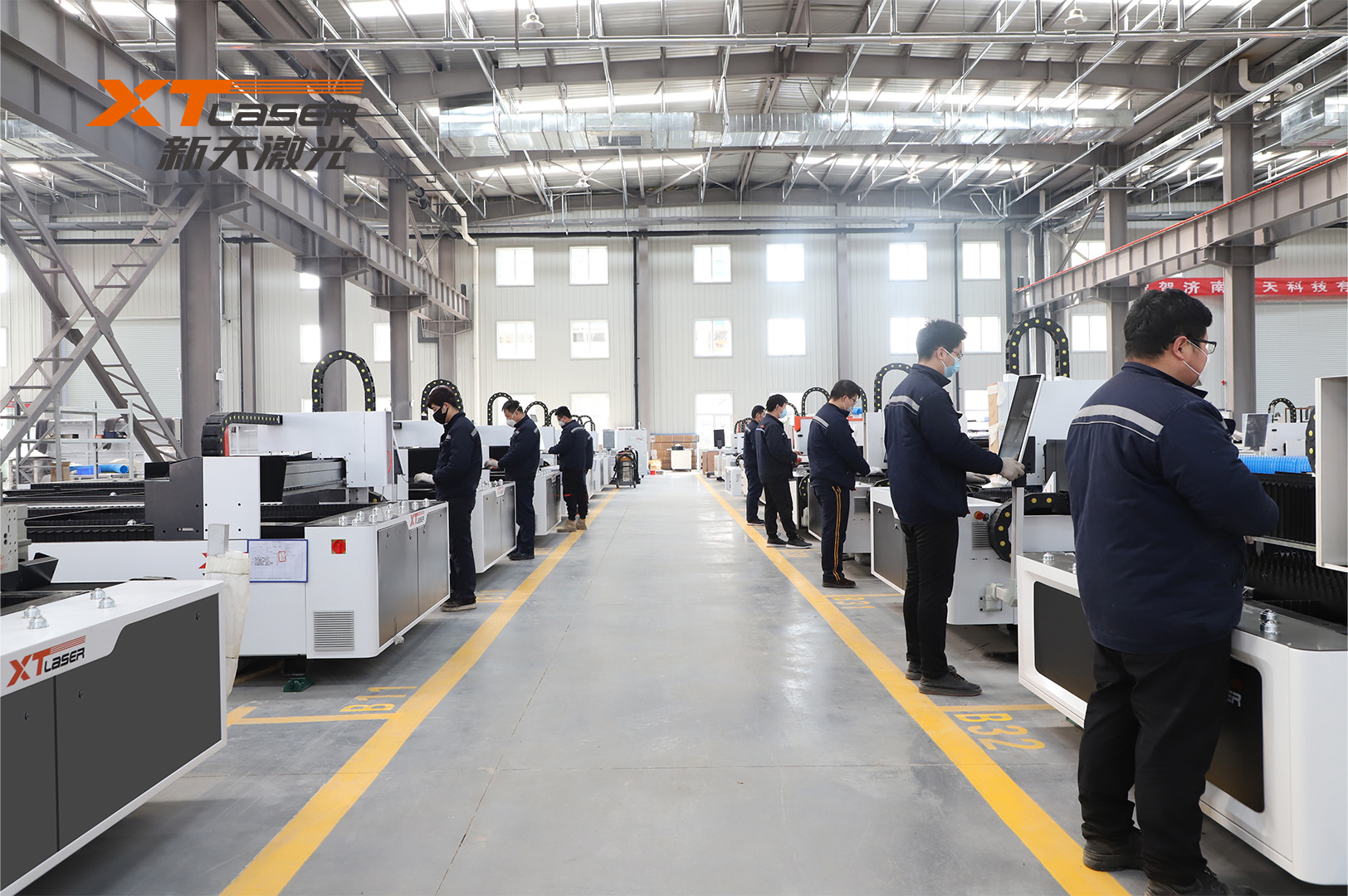Can rusty iron plates be cut with a laser cutting machine
XT Laser Metal Laser Cutting Machine
How does the metal laser cutting machine perform during processing
The first thing to introduce to you is the processing principle of a metal laser cutting machine: the laser emitted by the laser is focused by a lens and converges into a very small spot at the focal point. The workpiece at its focal point is irradiated by a high-power laser spot, which generates a local high temperature of over 9000 ° C, causing the workpiece to vaporize instantly. In addition, auxiliary cutting gas is used to blow away the vaporized metal, and as the CNC machine tool moves, To achieve the purpose of cutting.

Due to its high hardness and high temperature resistance, high-temperature alloys are difficult to ensure accuracy when using laser cutting. Therefore, compared to general steel, the main difficulties in using metal laser cutting machines to process high-temperature aluminum alloys are:
1. High tendency of work hardening. For example, the matrix hardness of GH4169 without strengthening treatment is about HRC37. After being cut by a metal laser cutting machine, a hardening layer of about 0.03mm will be generated on the surface, and the hardness will increase to around HRC47, with a hardening degree of up to 27%. The work hardening phenomenon has a great influence on the life of the oxidized tip tap, which usually results in severe boundary wear.
2. The material has poor thermal conductivity. The large amount of cutting heat generated during the cutting of high-temperature alloys is borne by the oxidation tip tap, and the tool tip bears a cutting temperature of up to 700-9000 ℃. Under the action of high temperature and high cutting force, plastic deformation, adhesion, and diffusion wear of the cutting edge will occur.
3. High cutting force. The strength of high-temperature alloys is more than 30% higher than that of commonly used alloy steel materials for steam turbines. At cutting temperatures above 600 ℃, the strength of nickel based high-temperature alloy materials is still higher than that of ordinary alloy steel materials. The unit cutting force of unreinforced high-temperature alloys is above 3900N/mm2, while that of ordinary alloy steel is only 2400N/mm2.
4. The main components of nickel based alloys are nickel and chromium, and a small amount of other elements such as molybdenum, tantalum, niobium, tungsten, etc. are also added. It is worth noting that tantalum, niobium, tungsten, etc. are also the main components used to manufacture oxidation tip taps for hard alloys (or high-speed steel). Processing high-temperature alloys with these oxidation tip taps will cause diffusion wear and abrasive wear.
Can rusty iron plates be directly cut with a laser cutting machine
Rust on metal materials such as iron plates and carbon steel is a very normal phenomenon in the humid and hot south. Can rusty boards be directly cut using a laser cutting machine? The answer is of course: No.
Everyone knows that laser cutting machines are divine tools for cutting iron like mud, but the laser of laser cutting machines is powerless against rust surfaces. Because laser itself cannot become a light source, heat can only be generated after being absorbed by the surface of the sheet metal workpiece. For materials that have not rusted and those that have already rusted, the laser absorption is very different, and the cutting effect is also different.
Taking a rusted plate below 5mm as an example, cutting a uniformly rusted plate as a whole will result in better cutting performance than uneven rusted plates. Because the overall evenly rusted plate absorbs laser evenly, it can perform good cutting. For materials with uneven rust on the surface, the surface condition of the material should be uniform before cutting. Of course, if conditions permit, it is still recommended to use a polishing machine for rust removal treatment first.
For thicker rusted plates, if a laser cutting machine is directly used to cut the rusted plate, it is easy to cause incomplete cutting, poor cutting quality, and even slag splashing, which may cause damage to the protective lens, or even focus on the lens, causing the ceramic body to explode. So, if cutting thick rusty materials, it is necessary to first remove rust before cutting.



